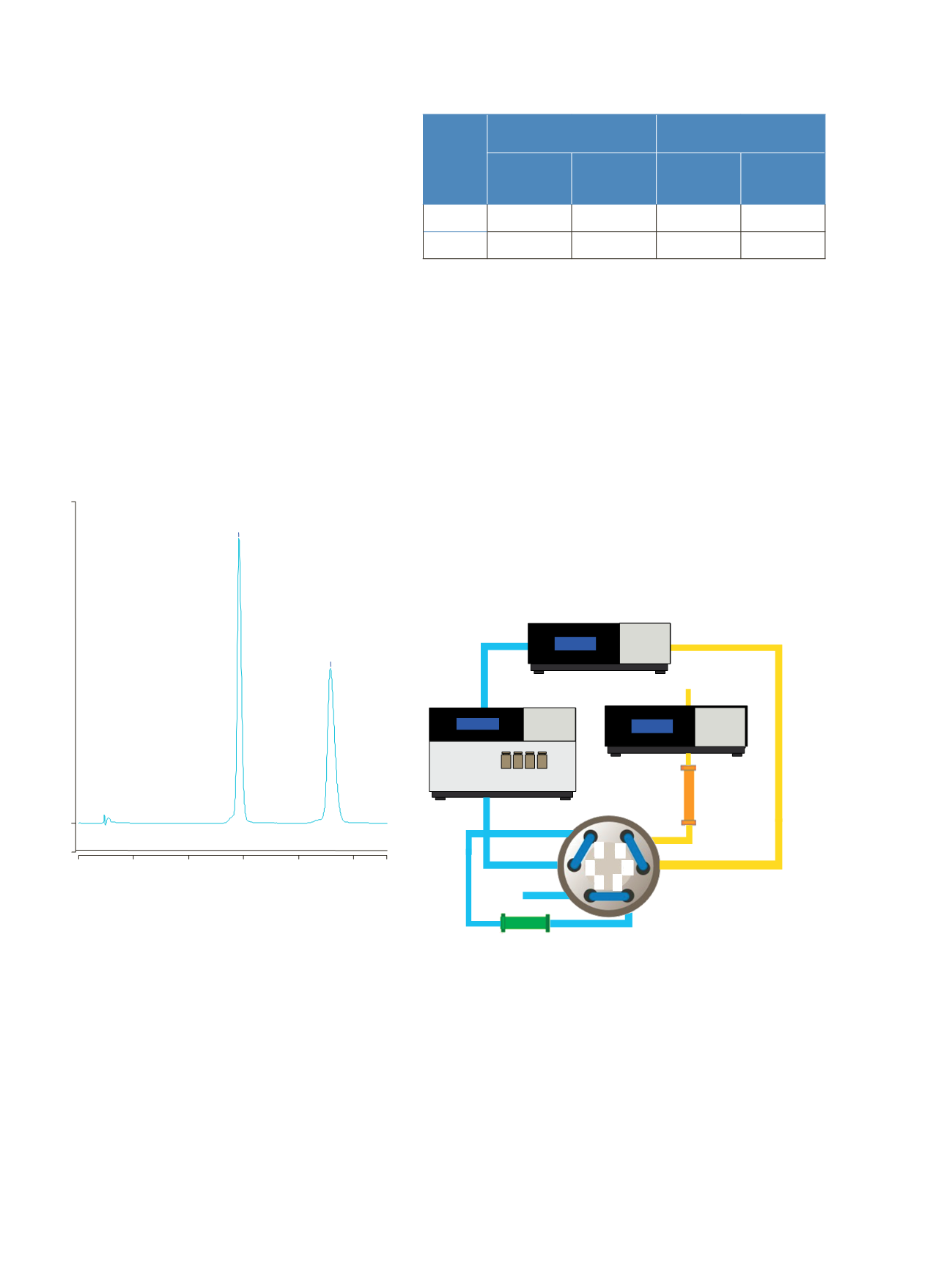

For On-Line SPE
Dual Ternary Pump
Autosampler
For Separation
Waste
Waste
SPE Column
UV
Analytical
Column
1
2
3 4
5
6
3
The Acclaim Trinity Q1 column has weak cation-exchange
functionality rather than the strong cation-exchange
functionality of the Acclaim Trinity P1 column. Table 2
lists the performance measurements of the Acclaim
Trinity P1
5
and Q1 columns for the separation of paraquat
and diquat under chromatographic conditions optimized
for each column. The results demonstrate the superiority
of the Trinity Q1 column for this determination.
Analyte
Acclaim Trinity P1 Column Acclaim Trinity Q1 Column
Asymmetry Peak Width
(min)
Asymmetry Peak Width
(min)
Paraquat
1.68
0.22
0.98
0.17
Diquat
1.39
0.18
0.89
0.12
Table 2. Comparison of column performance for the separation of paraquat
and diquat (5 µg/mL) on the Acclaim Trinity P1 and Q1 columns.
Figure 2. Chromatogram of paraquat and diquat (10 mg/L each).
Figure 3. Flow schematic of on-line SPE.
0.00
1.25
2.50
3.75
5.00
6.25 7.00
-20
0
220
1
2
Minutes
mAU
Column:
Acclaim Trinity Q1, 3 µm, Analytical (3.0 × 50 mm)
Mobile Phase: 35% 100 mM Ammonium
Acetate (pH 5.0)/65% Acetonitrile
Flow Rate:
0.5 mL/min
Temperature:
30 °C
UV Detection:
Absorbance at 290 nm
Peaks: 1. Paraquat
2. Diquat
Evaluations of On-Line SPE
Figure 3 shows a typical flow schematic of on-line SPE,
which is directly coupled to the HPLC column using one
6-port (2 p to 6 p) valve. The filtered sample is injected
directly onto the system and delivered to the SPE column
for enrichment (1_2 position) using the first pump; the
analytical column is simultaneously equilibrated with the
second pump of the dual-pump module. After the analytes
are bound to the SPE column and impurities are washed
out, the SPE column is switched into the analytical flow
path to elute the bound analytes (6_1 position); the analytes
are then separated on the analytical column and detected
by the UV detector. This method is easily accomplished
using the UltiMate 3000 x2 Dual RSLC system.
Results and Discussion
Separation of Paraquat and Diquat on the Acclaim
Trinity Q1 Column
The Acclaim Trinity Q1 column is based on innovative
nanopolymer silica hybrid (NSH) technology and has
reversed-phase, anion-exchange, and cation-exchange
retention mechanisms that can be independently
controlled.
6
The weak cation-exchange function provides
retention and separation for diquat and paraquat, whereas
the weak anion-exchange moiety effectively deactivates
the undesirable interaction between the surface silanols and
the analytes. As shown in Figure 2, this column provides
sufficient retention, excellent resolution, good peak shape,
and a fast analysis time for diquat and paraquat.



















